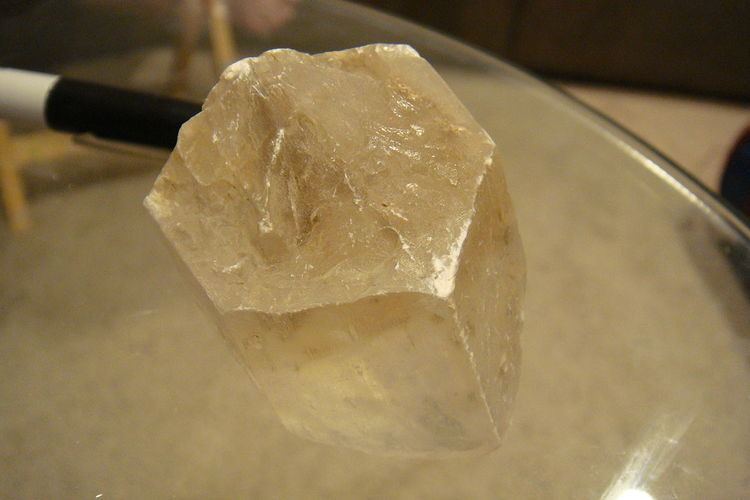Category Sulfate minerals Strunz classification 7.BD.30 Space group P63/m | Formula(repeating unit) Na22K(SO4)9(CO3)2Cl Crystal system Hexagonal | |
 | ||
Crystal class Dipyramidal (6/m)H-M symbol: (6/m) | ||
Hanksite is a sulfate mineral, distinguished as one of only a handful that contain both carbonate and sulfate ion groups. It has the chemical formula: Na22K(SO4)9(CO3)2Cl.
Contents
Occurrence
It was first described in 1888 for an occurrence in Searles Lake, California and named for American geologist Henry Garber Hanks (1826–1907). Hanksite is normally found in crystal form as evaporite deposits. Hanksite crystals are large but not complex in structure. It is often found in Searles Lake, Soda Lake, Mono Lake, and in Death Valley. It is associated with halite, borax, trona and aphthitalite in the Searles Lake area.
Physical characteristics
Hanksite can be colorless, white, gray, green or yellow and is transparent or translucent. The mineral's hardness is approximately 3 to 3.5. The specific gravity is approximately 2.5 (slightly below average). It is salty to the taste and sometimes glows pale yellow in ultra-violet light. Typical growth habits are hexagonal prisms or tabular with pyramidal terminations. The streak of Hanksite is white. It can contain inclusions of clay that the crystal formed around while developing.
